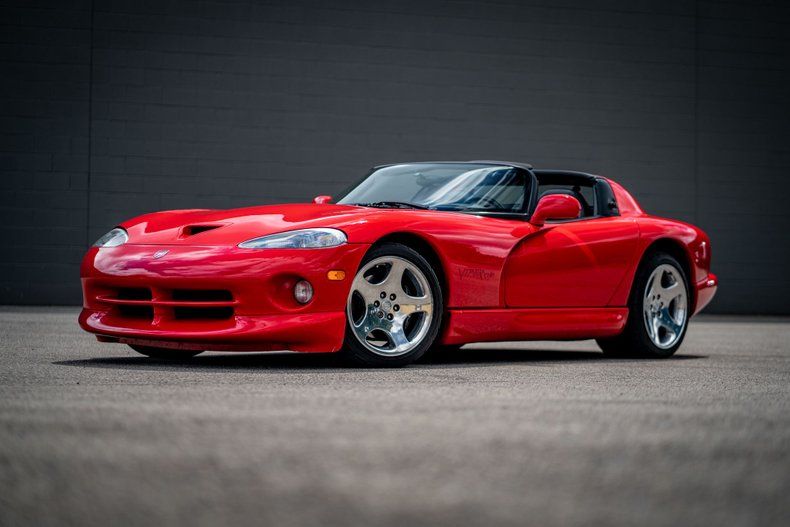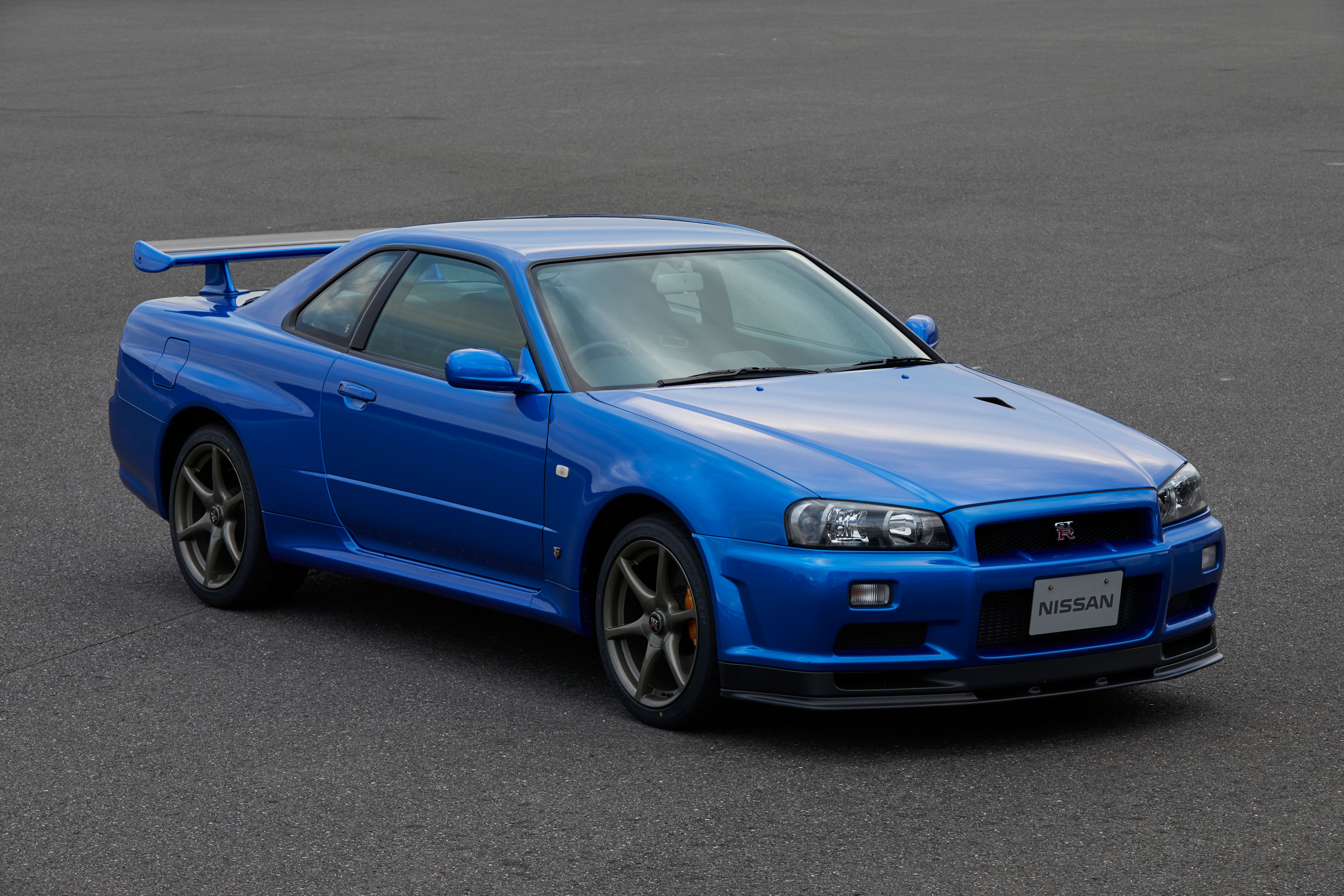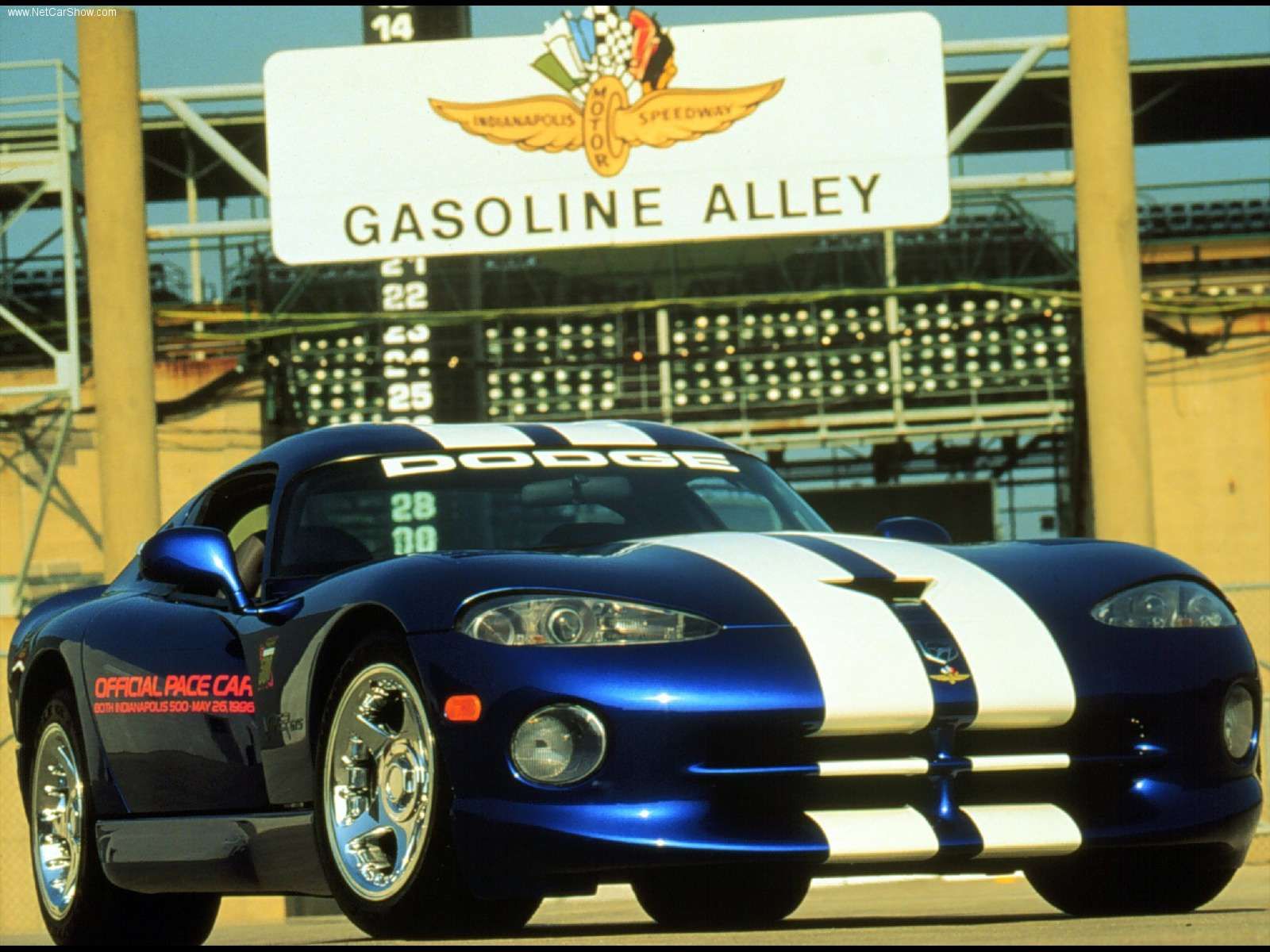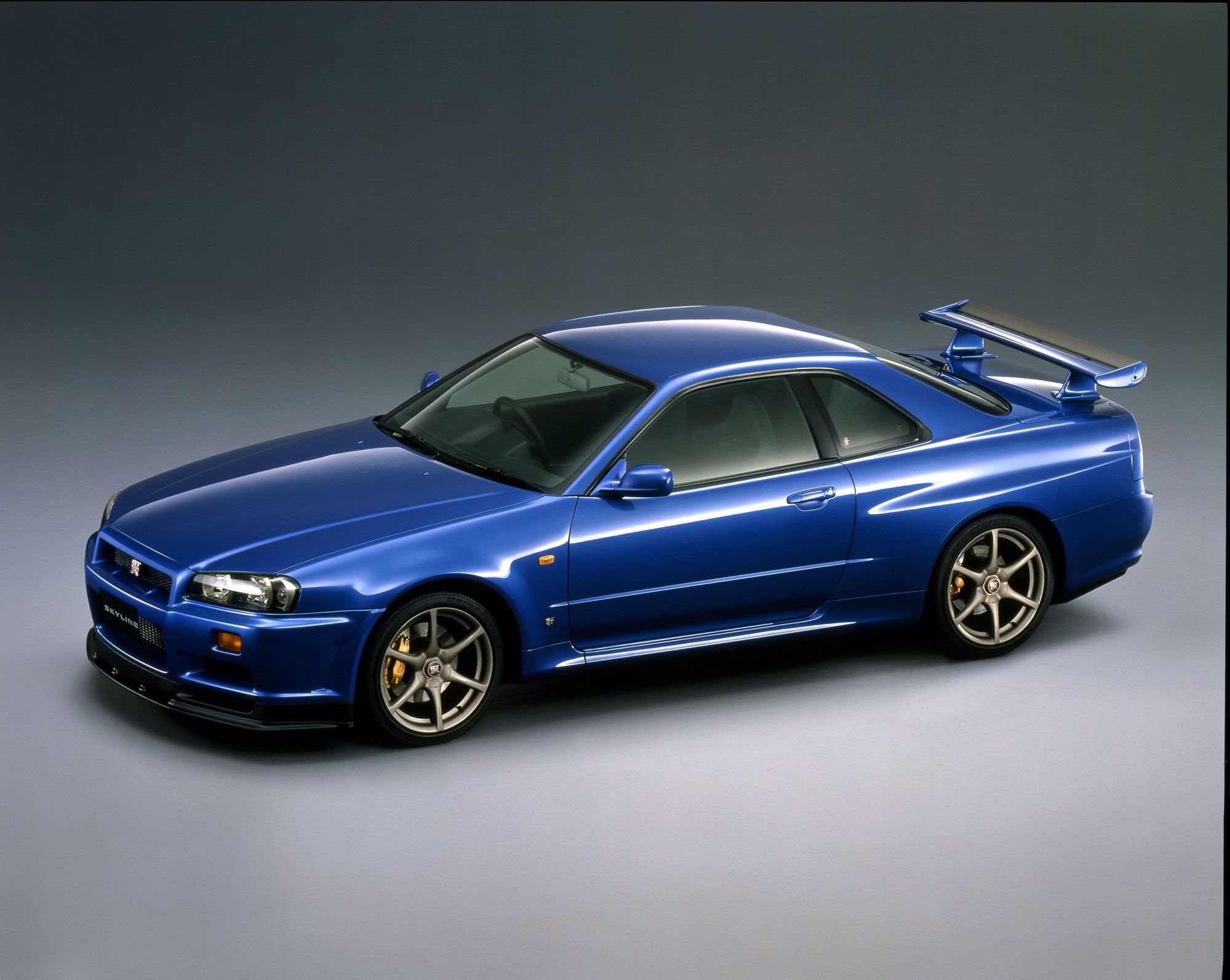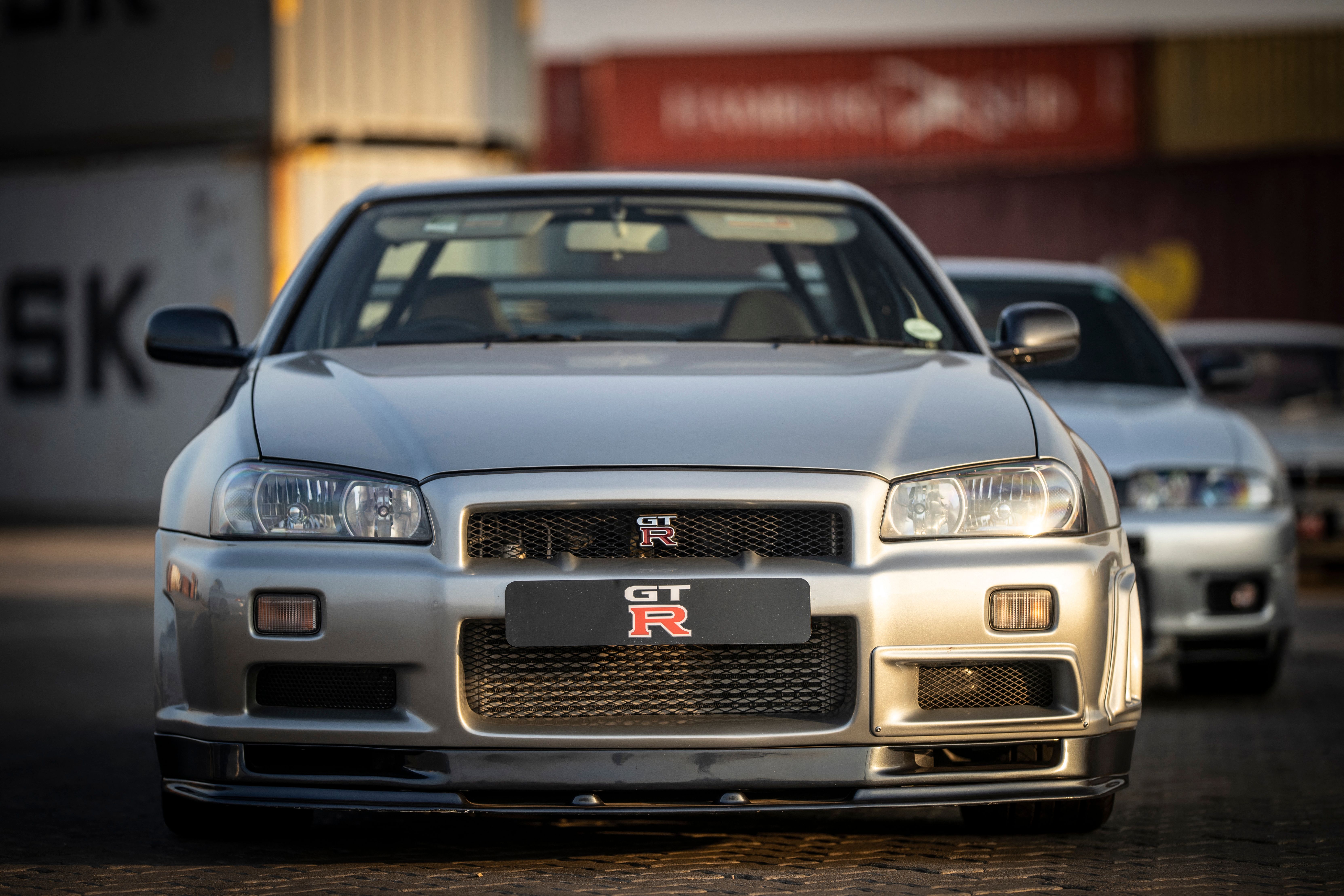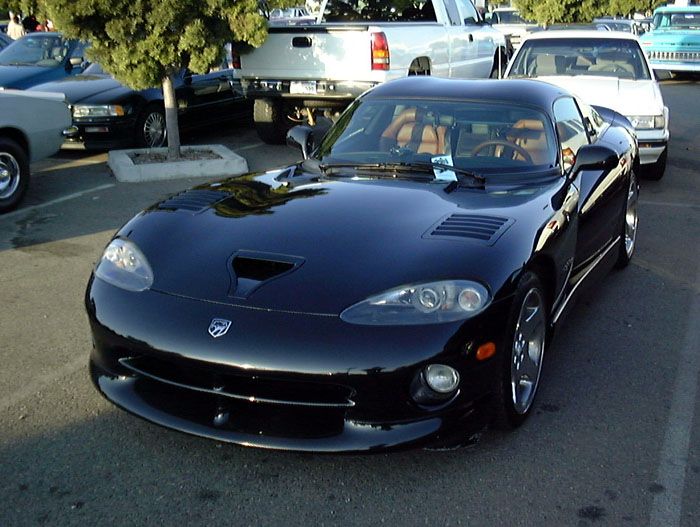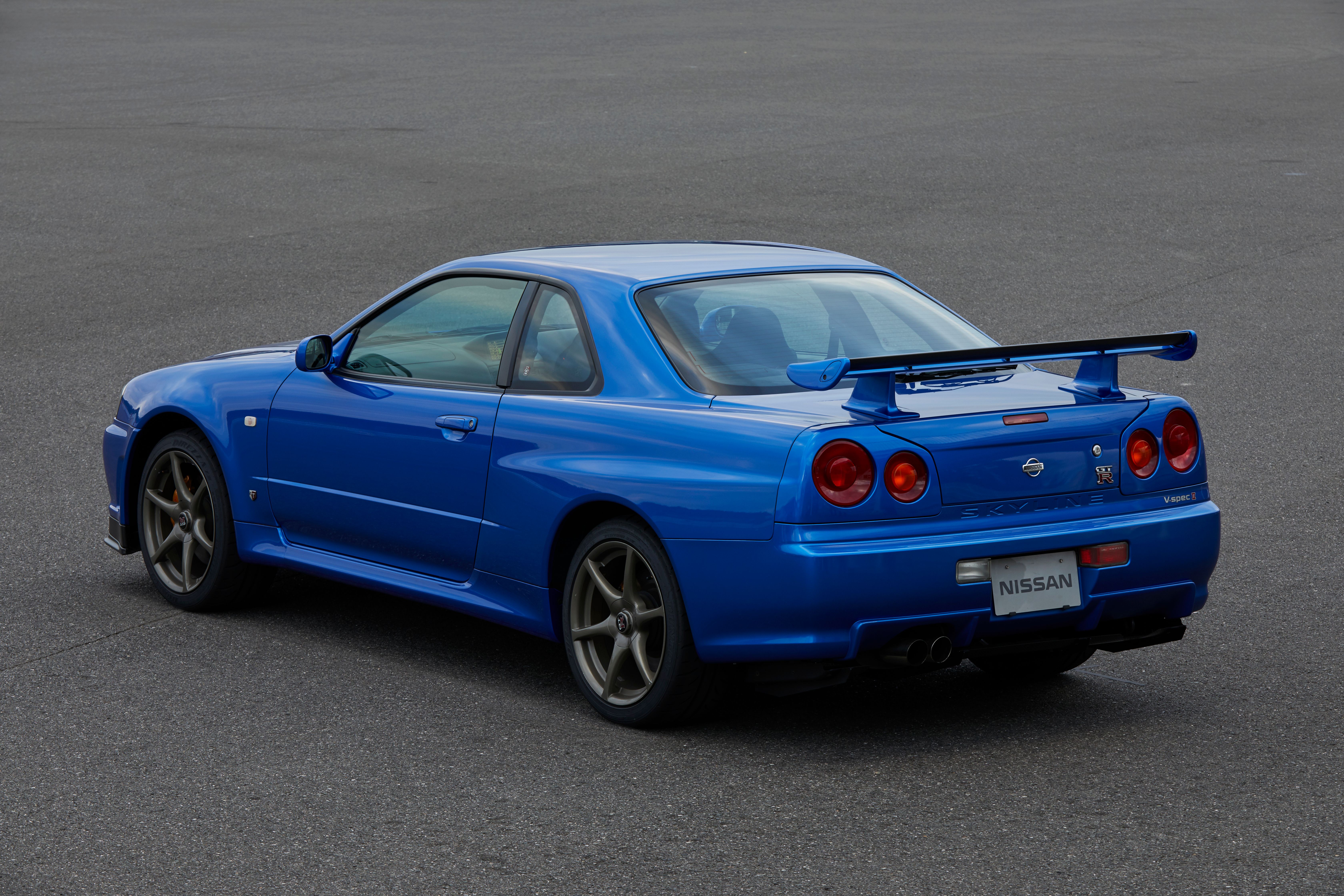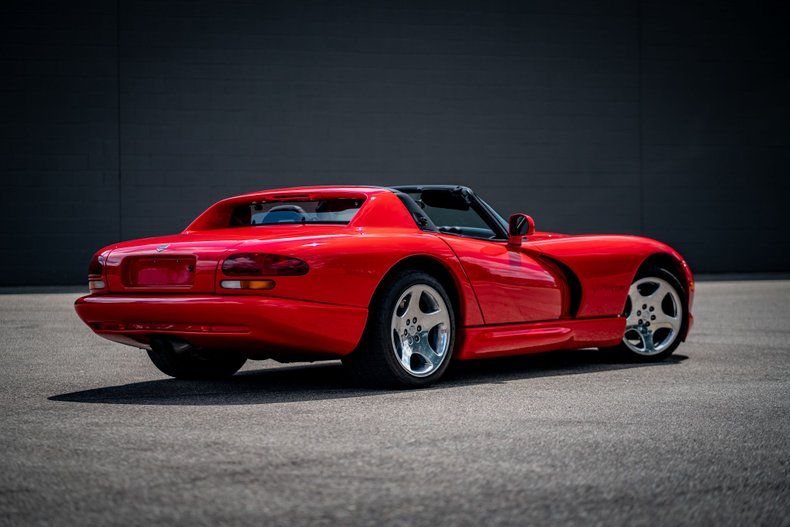Comparing the Nissan Skyline R34 GT-R and second-generation Dodge Viper (SR) is like comparing apples to oranges. However, one thing they have in common is that they both represent the peak sports car of the late 1990s to early 2000s period and have a cult following. If you are either a Skyline or a Viper enthusiast, you probably know all there is to know about these cars, and you can skip the article. But if you aren’t firmly pledged to either camp, the comparison between these two automotive icons might surprise you.
High-tech versus old-school
Despite both the Skyline GT-R R34 and Viper SR2 being produced in the same period – 1999 to 2002 for the Skyline R34 and 1997 to 2002 for the Viper SR2 – both vehicles deliver their performance in a very different way. The Nissan Skyline relies on computer-controlled all-wheel-drive, hydraulically-actuated all-wheel-steering, and forced induction to produce performance. The Skyline’s high-tech features are controlled by a plethora of ECUs, located in an area between the rear seats and the trunk, which robs you of cargo space.
The Dodge Viper is like a typewriter by comparison. It sends power to the rear wheels only and its powerplant was based on a 5.9-liter V-8 from a light truck, which is also what powered the 1989 Dodge Viper concept car. Despite having electronic fuel injection, the Viper is as analog as it could be, compared to the Skyline.
Twin-turbo versus big displacement
Another area where the R34 GT-R and Viper are very different is the choice of engine. The legendary RB26 DETT, 2.6-liter inline-six engine was developed for racing purposes and packs twin-parallel turbochargers. This means that each turbocharger provides boost for three of the cylinders. Variable cam timing (VCT) is not available out of the factory, but the tuning company HKS has developed a VCT head for the RB26.
Due to the Japanese gentleman’s agreement, power from the RB26 is rated at 276 horsepower. However, this is wheel-horsepower, and the actual engine horsepower is 327. Peak torque for the stock RB26 DETT is rated at 289 pound-feet (393 Nm). Power is managed by the ATESSA all-wheel-drive system, which acts similarly to a Haldex system, and six-speed manual transmission from Getrag. The DOHC valvetrain and oversquare design of the RB26, with a bore of 86 mm (3.4 inches) and a 73.3 mm (2.9-inch) stroke give it rev-happy characteristics.
The way the Dodge Viper extracts performance is much simpler and raw. Its 8.0-liter (488 cubic-inch) pushrod V-10 lacks forced induction or variable cam timing (the latter was introduced for the fourth-generation Viper). Instead, it relies purely on displacement. The pushrod engine features an almost-square design with a bore of 101.6 mm (4.0 inches) and a stroke of 98.6 mm (3.88 inches). Power goes to the rear through a BorgWarner/Tremec T56, six-speed manual with 3.07 rear gears.
It’s worth noting that 1999 was the last year in which the Viper got forged pistons. Those would return in 2012, on the fifth generation Viper. Second-generation Vipers after 1999 featured hypereutectic pistons, which provided less expansion, and a different camshaft. Naturally, forged pistons were more desired by those wanting to go the forced induction route.
Both feature racing know-how, but in a different way
The R34 GT-R was the final evolution of the Skyline. It started with the R32 GT-R, which was needed in order to homologate a racing version for the Touring car series. Of course, the car had a very successful racing career, like the original, 1969 GT-R. It dominated the racing series to the point where it was nicknamed Godzilla and even inspired the creation of the Australian V-8 Supercar racing series. Naturally, the R33 and R35 GT-R models were underpinned by the same platform and improved upon it.
While the Dodge Viper is not a homologation special, it also had a successful career. GT3 versions, based on earlier Viper models, were developed in France, by the racing team Oreca. As for the street version, Tom Gale, Bob Lutz, and Lee Iacocca were involved in the project, with Carrol Shelby later being attached to the team. His experience as a racing driver and a car constructor would help turn the Viper into the raw performance machine that it is. Moreover, the Viper was meant to be a spiritual successor to the Shelby Cobra so it only made sense to involve Carrol Shelby.
Both are appreciating in value
At the time of writing this, the car market is in a state of a bubble. Prices have been going sky-high with some cars not only keeping their value but also appreciating. Naturally, it is even truer for rare and desired performance cars like the Nissan Skyline GT-R and Dodge Viper. Skylines, in particular, especially the limited-edition versions of the R34 GT-R, have reached absurd figures, with the rare M-Spec, V-Spec, and NISMO versions going for over $500,000. The most affordable R34 GT-R we managed to find will set you back $60,000.
Things are slightly better for the second-generation Dodge Viper. While finding a clean example for under $40,000 nowadays, is a nigh-impossible, you can still fetch a clean one for around $45,000 to $50,000 if you are not too picky in terms of color, body style, and mileage. The most desirable SR2 Vipers are the blue with white stripes GTS, the ACR, and any Viper that has a tan leather interior. Some of those have already crossed the $100,000. Immaculate examples of the Viper, with fewer miles on the odometer, regardless of the spec, can go for at least $55,000.
Both could be more expensive to maintain than they are worth
Of course, that heavily depends on which region of the world you are based. For a Nissan Skyline, anywhere on the Asian continent would be great, with those in Japan being in the best position, for obvious reasons. Otherwise, given the R34’s popularity across the globe, you will almost always have to import parts from Japan and those are steadily creeping up in value. A NISMO body kit, for example, will set you back at least $5,000. It is worth noting that, in terms of maintenance, the R34 GT-R features three differentials, each of which requires a different type of oil.
The Skyline R34 GT-R was only ever sold for the Japanese market with a small number being imported to the UK. With that said, looking for rust is key when buying one as the brown plague is (literally) growing fond of the R34 with each passing year. One particular spot in the trunk area around the taillights, which sometimes, aren't properly sealed.
If you opt for the Dodge Viper SR2, you will face similar challenges. Even in the US, some parts are getting harder to find. The good news, for those based in Europe, is that there are plenty of big American car communities, most of which are situated in Germany and the Scandinavian countries like Sweden and Norway.
However, that clamshell front hood/bonnet is by far, the most expensive exterior part of the car, with prices already being well over $10,000. Moreover, earlier Vipers have a very particular set of tires – 275/35 R17 front and 335/30 R17 rear. Pirelli is the only manufacturer that still produces this tire size. The Viper's body is made out of composite and aluminum so rust isn't an issue there. You might want to inspect the tubular steel frame, though. Otherwise, the simplicity of the Viper makes it much easier to work on and maintain than the tech-heavy R34 GT-R.
Which one is better, the Japanese Godzilla or the American snake? This, of course, can only be determined by what you are looking for in a car. Regardless, this is how these two very different dream cars from the 1990s stack up against one another.

